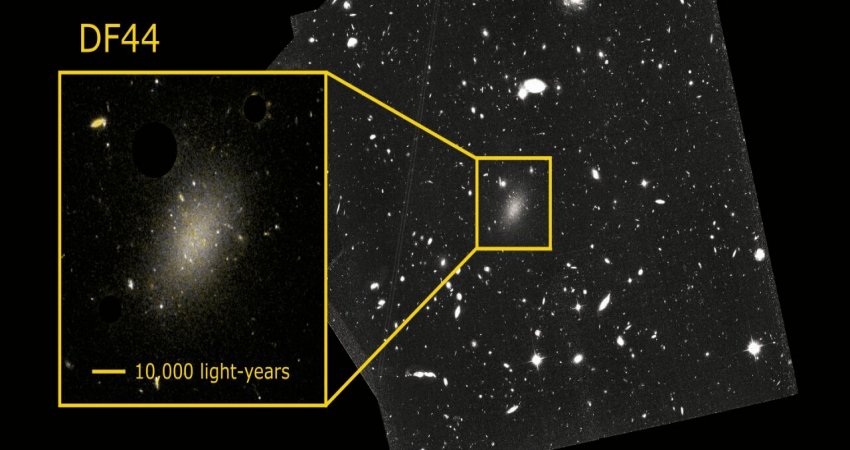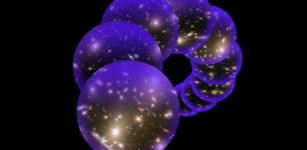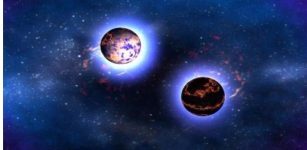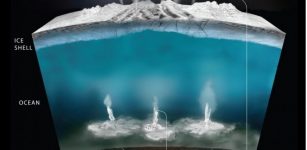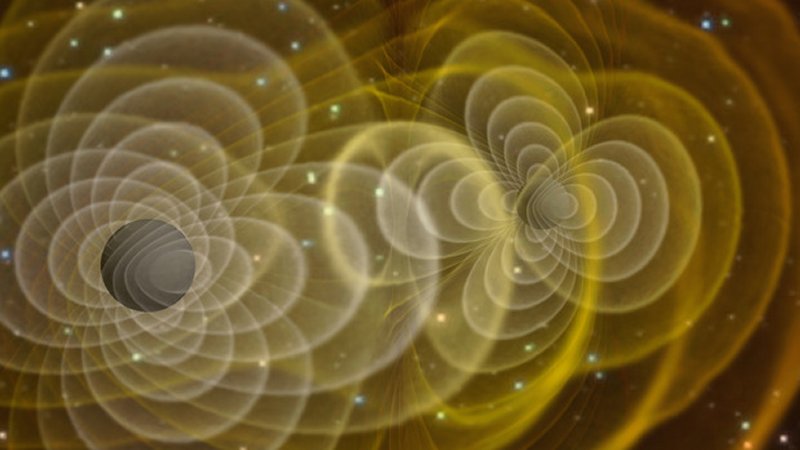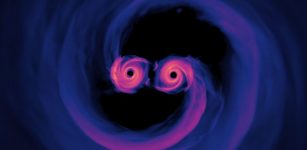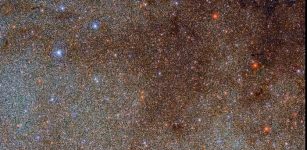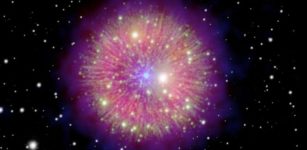Two Rare Polar Ring Galaxies Discovered By ASKAP Radio Telescope
Eddie Gonzales Jr. – MessageToEagle.com – A group of international astronomers, including researchers from Queen’s University, has identified two potential polar ring galaxies, according to results published today in the Monthly Notices of the Royal Astronomical Society.
Potential polar ring galaxy NGC 4632. The picture shows a gaseous ring perpendicularly circulating the main spiral disk of the galaxy. [Credit: Jayanne English (U. Manitoba), Nathan Deg (Queen’s U.) & WALLABY Survey, CSIRO / ASKAP, NAOJ / Subaru Telescope]
Queen’s researchers Nathan Deg and Kristine Spekkens (Physics, Engineering Physics & Astronomy) led the analysis of data obtained using a telescope owned and operated by CSIRO, Australia’s national science agency.
Looking at sky maps of hydrogen gas in over 600 galaxies as part of CSIRO’s ASKAP radio telescope’s WALLABY survey, they identified two potential polar ring galaxies, a type of galaxy that exhibits a ring of stars and gas perpendicular to its main spiral disk.
Although this is not the first time that astronomers have observed polar ring galaxies, they are the first observed using the ASKAP telescope located at Inyarrimanha Ilgari Bundara, CSIRO’s Murchison radio astronomy observatory on Wajarri Yamaji Country in Western Australia.
These new detections in gas alone suggest polar ring galaxies might be more common than previously believed.
Understanding how galaxies evolve
Further investigation of polar ring structures can help us better understand how galaxies evolve. For example, one of the main hypotheses to explain the origin of polar rings is a merger where a larger galaxy ‘swallows’ a smaller one. If polar ring galaxies are more common than previously thought, this could mean that these mergers are more frequent.
In the future, polar ring galaxies can also be used to deepen our understanding of the universe, with potential applications in dark matter research. It is possible to use polar rings to probe the shape of dark matter of the host galaxy, which could lead to new clues about the mysterious properties of the elusive substance.
Visualizing polar ring galaxies
Jayanne English, a member of the WALLABY research team and also an expert in astronomy image-making at the University of Manitoba, developed the first images of these gaseous polar ring galaxies using a combination of optical and radio data from the different telescopes. First, optical and infrared data from the Subaru telescope in Hawaii provided the image for the spiral disk of the galaxy. Then, the gaseous ring was added based on data obtained from the WALLABY survey, an international project using CSIRO’s ASKAP radio telescope to detect atomic hydrogen emission from about half a million galaxies.
The creation of this and other astronomical images are all composite because they include information that our eyes can’t capture. In this particular case, the cold hydrogen gas component, invisible to the human eye, is seen in radio “light” using CSIRO’s ASKAP. The subtle colour gradient of this ring represents the orbital motions of the gas, with purple-ish tints at the bottom tracing gas that moves towards the viewer while the top portion moves away. The emission from the ring was separated from the radio emission emanating from the disk of the galaxy using virtual reality tools, in collaboration with Professor Tom Jarrett (University of Cape Town, South Africa).
Over 25 global collaborators from Canada, Australia, South Africa, Ecuador, Burkina Faso, Germany, China, and beyond worked together to analyze the data from the first public data release of the WALLABY survey, resulting in the newly published paper.
The next step for the team is to confirm the polar ring galaxies finding through additional observations using different telescopes, including the MeerKAT radio telescope in South Africa.
Original story – via Eurekalert
Written by Eddie Gonzales Jr. – MessageToEagle.com Staff


